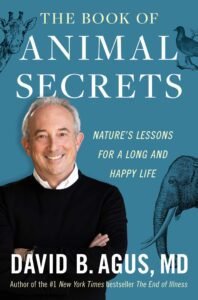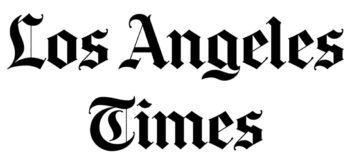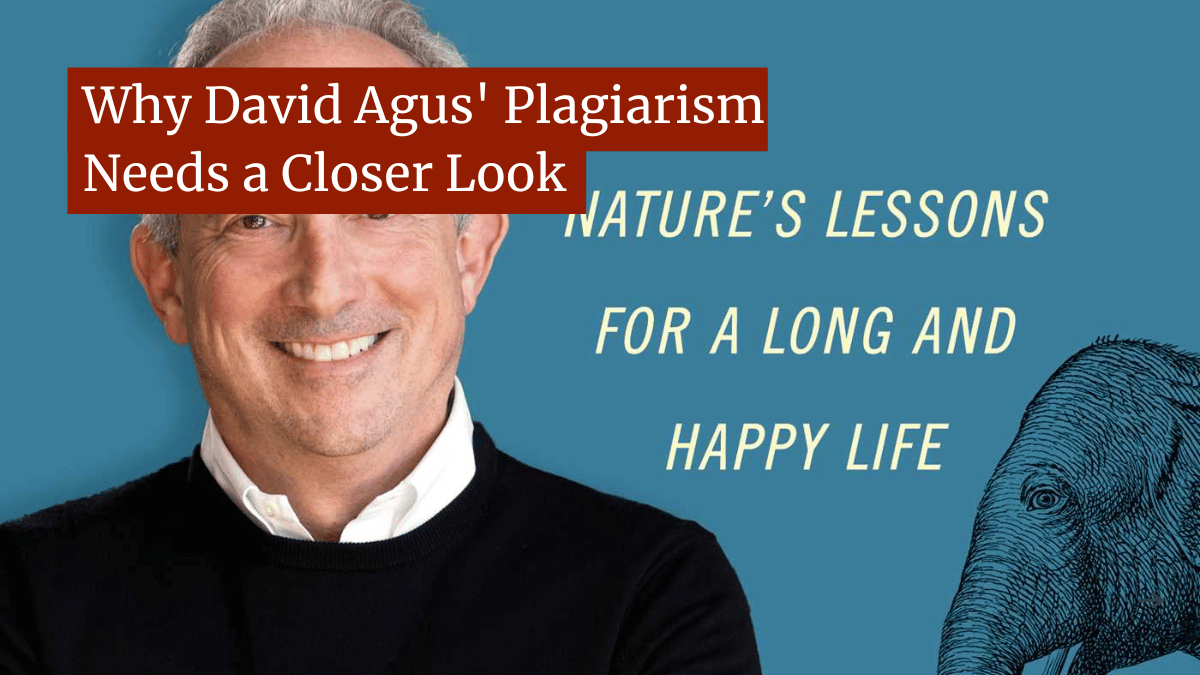Explained: the David Agus Plagiarism Scandal

Dr. David Agus is an American physician and author. He is best known for his regular appearances on CBS News, where he is a medical contributor, and his books, the fourth of which was originally slated to be published today.
However, that book, The Book of Animal Secrets: Nature’s Lessons for a Long and Happy Life, has been at least temporarily withdrawn as the Los Angeles Times reports that they found over 95 plagiarized passages in the book while performing a pre-publication review of it.
According to Corinne Purtill, who wrote the article, the passages involved included everything from a few sentences to multiple paragraphs that were copied verbatim from various sources, including The New York Times, National Geographic, Wikipedia as well as various smaller websites, blogs and medical journals.
Agus, for his part, did not deny the plagiarism and said in a statement, “I was recently made aware that in writing The Book of Animal Secrets we relied upon passages from various sources without attribution, and that we used other authors’ words. I want to sincerely apologize to the scientists and writers whose work or words were used or not fully attributed.”
Agus, with the backing of the book’s publisher (Simon & Schuster), has agreed to withdraw the book’s publication, “Until a fully revised and corrected edition can be released.”
Both CBS and the University of Southern California (USC), where Agus is employed, have said that they take plagiarism very seriously and are looking into the matter, but declined to offer any additional comment.
All this raises a simple question: How serious are these allegations and what should Agus and those connected with him do about them? To find that out, we have to first look at the allegations themselves.
Understanding the Allegations

The allegations themselves are fairly straightforward. The Los Angeles Times claims that some 95 passages from the book can be found either verbatim or near-verbatim in other sources.
Though, in some cases, the source work was cited as having provided information, the words themselves are never quoted and many of the sources are not mentioned at all.
To show just one example provided by the Los Angeles Times, this quote comes from Agus’ book:
“[E]ven in mice that have been genetically engineered to have the plaques associated with Alzheimer’s disease, there are no tangles and very little damage to brain cells. This makes it hard to study how a potential drug can change the disease. We’re not about to start experimenting on dolphins in a laboratory setting the way we do with mice. But if altered insulin signaling can make an animal more susceptible to Alzheimer’s disease, we might be able to produce mice that are a true model of the disease and test them to find new treatments.”
This one comes from a 2017 interview with Simon Lovestone with Oxford University’s news service:
“At the moment, even in mice which have been genetically engineered to have the plaques associated with Alzheimer’s Disease, there are no tangles and very little damage to brain cells. This makes it difficult to find new targets for curing the disease, as well as studying how a potential drug can change the disease. But if altered insulin signaling can make an animal more susceptible to Alzheimer’s Disease, we might be able [to] produce mice that are a true model of the disease, which we can then test to find new treatments.”
As you can see, though edits and changes were made, significant portions of the text are verbatim and many of the changes were either to sentence structure or to simply swap out words for synonyms. It’s clear that Agus began with the original interview and edited the content to fit his needs.
Though one or two of these types of overlaps might have been explainable through coincidence or through momentary lapses in the writing process. However, 95 such passages is simply too much. It’s clear that Agus, or whoever physically wrote the book, has a habit of copying and pasting from outside sources without providing proper attribution.
However, that issue really isn’t what’s being debated. Both Agus and his publisher have admitted to the plagiarism and have temporarily withdrawn the book.
The real question is: Is was what they did enough?
Examining The Response
To give credit where it is due, both Agus and Simon & Schuster responded quickly and decisively to the report and the evidence. Retracting the book from publication one day before launch was almost certainly a costly move, and it’s one that Agus has agreed to take on as his expense.
But as strong as that response sounds, both Agus and the publisher have said that they are intending to release the book at a later date with the plagiarized passages fixed.
That is not the answer I would have hoped for.
The reason is simple: The pattern of the plagiarism and the quantity of it points not to simple errors in the writing, process, but a fundamentally flawed way of writing. Agus, or whoever physically wrote the book, clearly wrote large portions of the book by copying and pasting outside text in and trying to edit it to make it “original.”
As I’ve repeatedly written about before, this is not how one produces original writing. This style of writing ensures that, whatever is produced, is a derivative of the original sources, not a unique piece that integrates information from those sources.
Stories like this one are precisely why I have been such a strong advocate for the cleanroom writing method, and have pushed authors and students alike to implement the approach. I’ve also pushed for schools to teach it, especially in remedial environments.
As things are now, the plagiarism raises serious questions about Agus’ writing. However, more embarrassingly, it also raises questions about the editorial process of Simon & Schuster.
If the Los Angeles Times was easily and quickly able to find these 95 instances of plagiarism, why did the publisher fail? It seems that even a basic plagiarism analysis would have spotted some, if not all, of these passages. The fact that a major release did not undergo even a basic plagiarism analysis boggles the mind.
All of this expense, headache and embarrassment could have been avoided if, at any point in the editorial process, a proper plagiarism analysis had been performed.
This raises serious questions and concerns not just about this book, but the entire editorial process at Simon & Schuster. One has to wonder what, if anything, the publisher intends to do about it.
Lingering Questions
Despite the strong immediate response, the case still leaves us with a large number of questions that, as of right now, are unanswered.
Those questions include:
- How Will Agus “Fix” the Book? The amount of plagiarized passages present a major challenge in trying to fix the book. The issues have to do with how the book was written, not a few simple mistakes.
- How Will Simon & Schuster Update It’s Editorial Process? The fact that this plagiarism was discovered by The Los Angeles Times and not the publisher’s own people should worry them and motivate them to update their editorial process.
- What Role, if Any, Do Ghostwriters and Editors Have in this Plagiarism? Though there has been no mention of ghostwriters, packaging services or other editors, such celebrity releases often use them. It’s unclear what, if any, role those elements played.
- Is There Similar Plagiarism in Agus’ Earlier Works? If this book had such serious issues, what about his previous publications? Could those contain similar issues that also went undetected. It would require an evaluation to find out.
- Will Agus Change His Writing Process in the Future? It’s clear that the writing process that produced this book is deeply flawed. Will Agus change the way he writes in future works?
The reason that these questions are important is because this case of plagiarism doesn’t hint at a few minor mistakes when writing and editing the book, it points to systemic flaws both in how the book was written and how it was prepared for publication.
Fixing the book, whatever that entails, doesn’t address those systemic issues. Unless Agus drastically changes his approach to writing, we could easily end up back in the same place with his next book.
Instead, there needs to be a more holistic response in addition to the immediate one, and that response should include:
- A Check of All Agus’ Previous Work: Perform a thorough evaluation of Agus’ previous writing. The focus should be on his other books, but it’s also worthwhile to evaluate any scientific publishing or other writing that he has done, including for CBS or USC.
- An Evaluation of Simon & Schuster’s Editorial Process: Simon & Schuster should be dedicated to ensuring that this never happens again, and that would require a revamp of their editorial process.
- A Public Accounting of the Plagiarism and How it Happened: If the public is to trust Agus’ work in the future, there needs to be a full accounting of the plagiarism and the oversights that allowed it to get so close to publication.
- Appropriate Action Taken Against Agus: Similarly, Agus himself needs to face whatever repercussions are appropriate. Paying to withdraw the book is a good first step, but if additional plagiarism is discovered, additional action may be necessary.
- A Plan on How to Prevent Future Cases Like This: All these steps should combine to create a plan in which both Agus and his publisher dedicate themselves to not allowing this to happen again.
Without those actions, we won’t know the full extent of Agus’ plagiarism, and we open the door to future cases just like this one. Without these types of steps, this is a process that is doomed to repeat itself, either with Agus or another author.
Bottom Line
To be clear, Agus is not alone. His story is echoed by the Jumi Bello story from May 2022. Both are authors who had issues with plagiarism in books before publication and had those books retracted. Both authors also had evidence of systemic issues in their approach to writing that led to the issues.
The only difference between them is that Bello’s book was permanently withdrawn, leaving her career as an author in limbo. Agus, as an established author, is getting an opportunity to “correct” the book and attempt publication again.
But there is no easy way to correct a work with such systemic issues. The problem isn’t that Agus made a few mistakes, it’s that the way he wrote the book was fundamentally flawed. Both he and his publisher need to account for that.
For all involved, this needs to be a wake-up call. Simon & Schuster needs to address its editorial process, Agus needs to address his writing process, and those involved with his prior work are on notice that there needs to be an investigation into them.
With plagiarism, an ounce of prevention truly is worth more than a pound of cure. If Agus had used a better approach to writing or if his publisher had done their due diligence, this onerous level of work would not be necessary.
What could have been a few moments to change the way one writes or a quick check in the editorial process now becomes a massive project that could take months or even years to complete.
However, it’s sadly unlikely that any proper accounting will take place. It’s also unlikely that either Agus or Simon & Schuster will change much. As such, we’ll likely be covering a similar scandal in a few years times as Agus or another author finds themselves in the exact same place.
Want to Reuse or Republish this Content?
If you want to feature this article in your site, classroom or elsewhere, just let us know! We usually grant permission within 24 hours.
